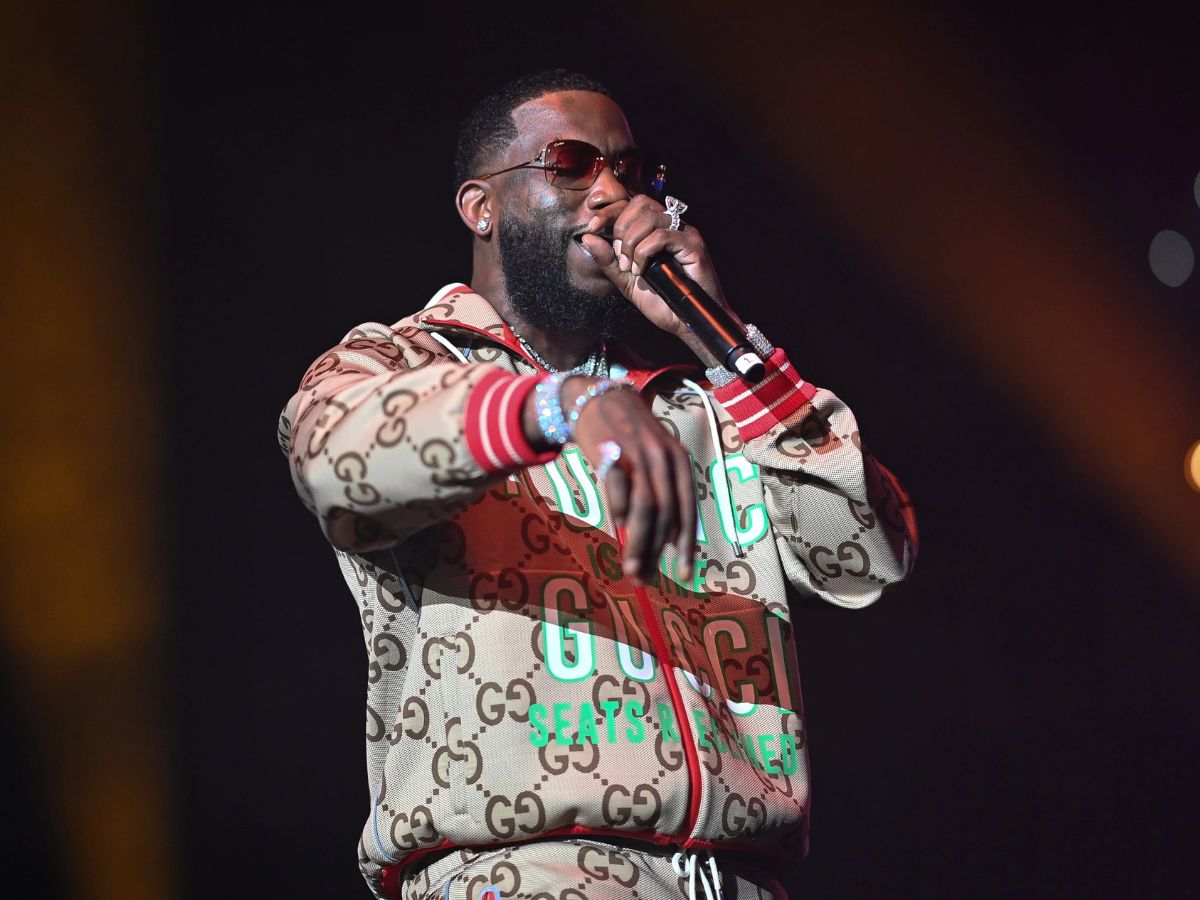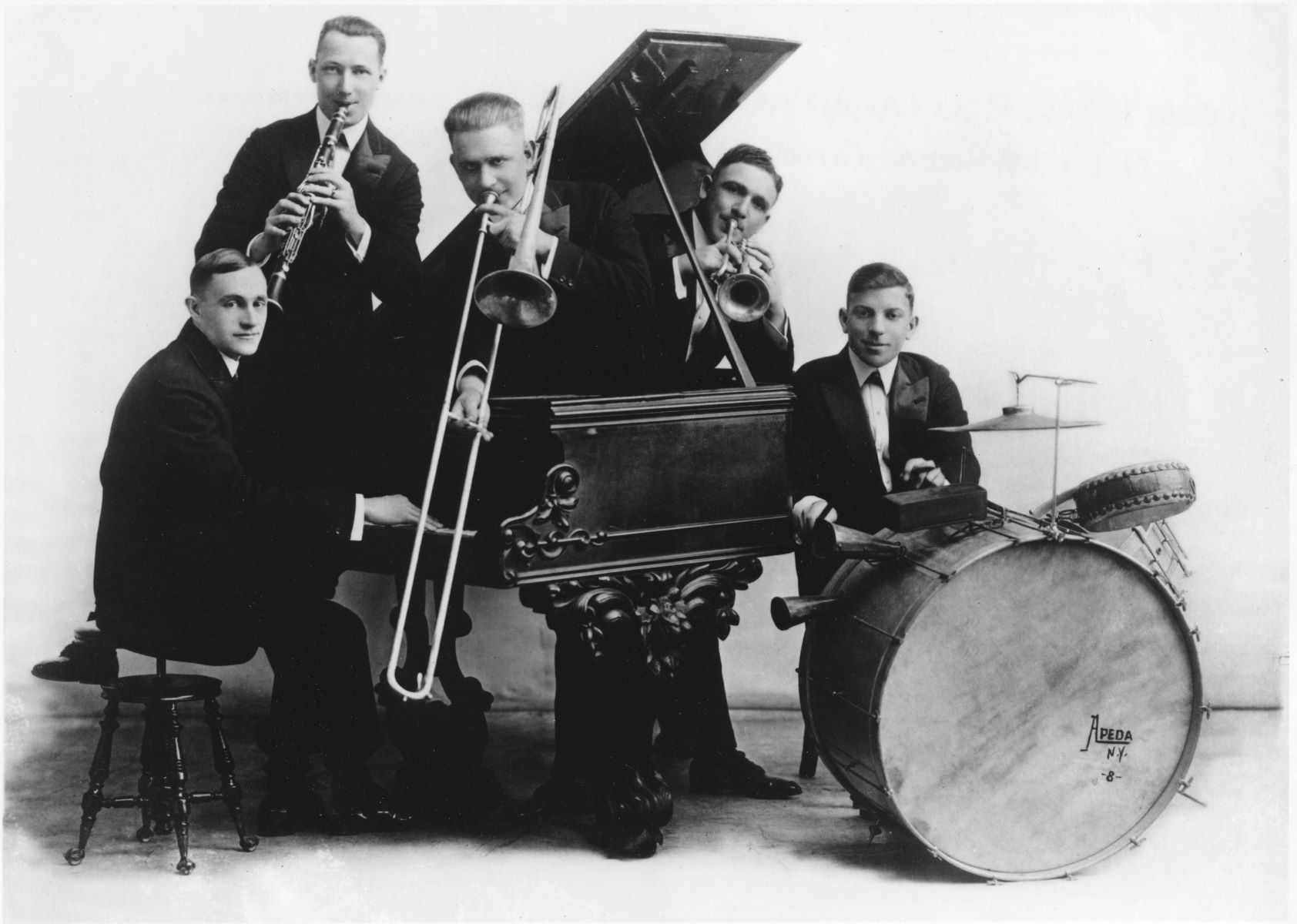Home>Genres>Hip Hop>In Which Decade Did Young African Americans Start Hip Hop Music?


Hip Hop
In Which Decade Did Young African Americans Start Hip Hop Music?
Modified: January 25, 2024
Discover the origins of Hip Hop music and its impact on young African Americans in this insightful exploration of the influential genre.
(Many of the links in this article redirect to a specific reviewed product. Your purchase of these products through affiliate links helps to generate commission for AudioLover.com, at no extra cost. Learn more)
Table of Contents
Introduction
Hip Hop music has become a global phenomenon, influencing cultures and artists around the world. It originated in the United States and has its roots deeply embedded in African American communities. This genre of music emerged as a powerful form of expression, providing a voice for young African Americans facing social, economic, and political challenges.
The question of when exactly young African Americans started creating hip hop music is a topic of debate among music historians. While the origins of hip hop can be traced back to the 1970s, the true birth of the genre is marked by the emergence of rap, breakdancing, and graffiti art in the streets of New York City.
Understanding the evolution of hip hop requires exploring the key decades that shaped its development. In this article, we will delve into the 1970s, 1980s, 1990s, and 2000s to uncover the milestones and cultural shifts that propelled hip hop to its current status as one of the most influential music genres of our time.
From its humble beginnings as a form of expression in urban African American communities, hip hop has evolved into a global phenomenon that has transcended boundaries of race, ethnicity, and socioeconomic status. As we explore the various decades, it is important to acknowledge the contributions and influences of the talented artists, producers, and pioneers who have shaped and molded hip hop into what it is today.
1970s: The Birth of Hip Hop
The 1970s marked the birth of hip hop, a cultural movement that originated in the Bronx, New York. It was a time of social unrest, economic inequality, and rising tensions in urban communities, particularly among young African Americans. It was within this environment that hip hop emerged as a powerful means of self-expression and a way to provide a voice for the disenfranchised.
In the early 1970s, DJ Kool Herc, widely regarded as one of the pioneers of hip hop, began hosting parties in the Bronx, where he would play funk and soul records. He discovered that the breakbeat sections of these records, which featured drum solos and rhythm breaks, were the most popular among partygoers.
Building on this concept, Herc developed a technique known as “breakbeat DJing,” where he extended the breakbeat sections by using two turntables and a mixer. This created a continuous loop of the most danceable parts of the songs, and it became the foundation of hip hop music.
Alongside the rise of DJing, young African American artists began experimenting with other elements of hip hop culture. Breakdancing, a dynamic form of street dance, emerged as a way to interpret and respond to the music. Graffiti art also became an integral part of hip hop, with artists using walls and subway trains as their canvas to express their creativity.
The birth of rap music, which became synonymous with hip hop, can be traced back to the late 1970s. DJs like Grandmaster Flash and Afrika Bambaataa started incorporating spoken word poetry and rhythmic chanting over the instrumental breaks, giving birth to a new form of musical expression. This style of performance, known as emceeing, laid the foundation for the lyrical aspect of hip hop.
As the 1970s came to a close, hip hop had firmly established its presence in the cultural landscape of African American communities in New York City. It was a time of innovation, creativity, and the birth of a musical genre that would soon spread its influence across the country and around the world.
1980s: The Golden Era of Hip Hop
The 1980s marked the golden era of hip hop, a time when the genre exploded in popularity and established its place in mainstream culture. This decade saw the emergence of iconic hip hop artists, the rise of influential record labels, and the development of groundbreaking musical innovations.
One of the key developments in the 1980s was the commercial success of hip hop records. Artists like Run-DMC, Public Enemy, and LL Cool J paved the way for hip hop to crossover into the mainstream, with their albums achieving widespread recognition and sales. This newfound success not only solidified hip hop as a viable and profitable genre but also brought its unique sound and culture to a wider audience.
During this time, record labels like Def Jam and Sugar Hill Records played a crucial role in shaping the landscape of hip hop. They provided a platform for emerging artists to release their music and showcased the diversity of the genre. This period also saw the birth of hip hop fashion, with artists like Run-DMC popularizing the iconic Adidas tracksuits and establishing a streetwear aesthetic that would transcend music.
Another significant development in the 1980s was the evolution of production techniques in hip hop. Producers like Marley Marl and Rick Rubin introduced innovative sampling methods, taking fragments of existing songs and layering them to create new beats and melodies. This technique, combined with the use of drum machines and synthesizers, revolutionized the sound of hip hop and set the stage for the future of production in the genre.
Lyricism also flourished in the 1980s, with artists delving deeper into social issues, personal narratives, and storytelling. Rappers like Rakim, Big Daddy Kane, and KRS-One raised the bar for lyricism, using intricate wordplay, clever metaphors, and thought-provoking messages to captivate audiences. Their contributions elevated hip hop to a form of artistic expression that went beyond mere entertainment.
The 1980s also witnessed the emergence of hip hop as a global phenomenon. The success of artists like Beastie Boys and N.W.A. showcased the genre’s ability to transcend racial and cultural boundaries. Hip hop became a voice for marginalized communities around the world, resonating with people who saw themselves represented in the music and the stories it told.
As the 1980s came to a close, hip hop had firmly established itself as a dominant force in the music industry. Its impact and influence would continue to shape the cultural landscape for years to come, laying the foundation for the next wave of hip hop’s evolution in the 1990s.
1990s: Hip Hop Goes Mainstream
The 1990s was a transformative decade for hip hop, as the genre experienced a surge in popularity and solidified its place in mainstream culture. This era saw a shift in sound, the rise of iconic artists, and an increased commercial presence. Hip hop became a dominant force in the music industry, influencing everything from fashion to film.
One of the defining features of the 1990s hip hop was the emergence of different regional styles. East Coast rap, characterized by its gritty storytelling and boom-bap beats, gained prominence with artists like Nas, Wu-Tang Clan, and The Notorious B.I.G. On the West Coast, gangsta rap took center stage, with acts like Dr. Dre, Snoop Dogg, and Tupac Shakur bringing their raw and often controversial narratives to the forefront.
The 1990s also marked the rise of women in hip hop, as artists like Queen Latifah, Salt-N-Pepa, and Missy Elliott broke barriers and brought female voices to the forefront. Their impact on the genre was immense, challenging gender norms and providing a platform for important social commentary.
The commercial success of hip hop continued to skyrocket in the 1990s. Albums like Dr. Dre’s “The Chronic” and Snoop Dogg’s “Doggystyle” became chart-topping hits, selling millions of copies and further solidifying the genre’s mainstream appeal. Major record labels recognized the profitability of hip hop and began signing more acts, resulting in increased visibility and opportunities for artists.
Another significant development in the 1990s was the integration of hip hop into other forms of media. Hip hop found its way into movies, with films like “Boyz n the Hood” and “Juice” showcasing the realities of urban life and the influence of hip hop culture. The genre also made its mark on fashion, with artists like Puff Daddy (now known as Diddy) and Jay-Z pioneering the fusion of hip hop and high-end luxury brands.
Furthermore, the emergence of the Internet and digital technology had a profound impact on the distribution and consumption of hip hop music. The rise of platforms like Napster and later, file-sharing sites, allowed fans to access and share music more easily, contributing to the rapid spread and global reach of hip hop.
Overall, the 1990s marked a pivotal moment in hip hop’s history. It became a cultural force to be reckoned with, breaking down barriers, dominating the charts, and influencing popular culture on a global scale. The decade set the stage for the future of hip hop, paving the way for even more innovative sounds, artistic expressions, and cross-genre collaborations in the years to come.
2000s: Hip Hop’s Evolution and Influence
The 2000s marked a period of significant evolution and influence for hip hop. The genre continued to push boundaries, embracing new sounds, styles, and collaborations while solidifying its impact on global culture.
One of the defining characteristics of hip hop in the 2000s was the increased focus on commercial success. Artists like Jay-Z, Eminem, and 50 Cent dominated the charts and achieved mainstream success, ushering in an era of entrepreneurship within hip hop. These artists not only garnered massive record sales but also ventured into various business ventures, from clothing lines to beverage companies, further expanding their influence beyond music.
The 2000s also witnessed a surge in the popularity of southern rap, with artists like OutKast, Lil Wayne, and T.I. emerging as major players in the industry. Southern hip hop brought a distinct sound and style, incorporating elements of funk, soul, and trap music, and showcased the diversity of the genre.
An important development in the 2000s was the rise of internet platforms and social media, which revolutionized the way music was discovered, promoted, and consumed. Artists no longer relied solely on traditional record label support, but instead utilized platforms like Myspace, YouTube, and later, SoundCloud, to showcase their music directly to fans. This democratization of the industry allowed for a greater variety of voices and contributed to the globalization of hip hop.
The 2000s also saw the emergence of conscious rap, as artists like Common, Lupe Fiasco, and Kendrick Lamar used their platform to address social and political issues. With thought-provoking lyrics and socially conscious messages, they pushed hip hop beyond mere entertainment, serving as a voice for marginalized communities and advocating for change.
Collaborations between hip hop artists and artists from other genres became increasingly common in the 2000s. This era saw hip hop artists working with pop stars, rock bands, and even electronic music producers, blurring the lines between genres. These collaborations not only expanded the reach of hip hop but also contributed to the cultural blending of musical styles.
As the decade drew to a close, hip hop had become a dominant force in popular music worldwide. Its impact reached far beyond the music itself, influencing fashion, language, and even politics. The cultural influence of hip hop was evident in the way it shaped and reflected the experiences, aspirations, and struggles of diverse communities around the world.
The 2000s represented a continuation and expansion of the legacy of hip hop, with artists pushing the boundaries of the genre and using their platform to effect change. This era set the stage for the ongoing evolution of hip hop in the future, ensuring its enduring relevance and influence in the world of music and beyond.
Conclusion
Hip hop’s journey from its humble beginnings in the streets of New York to its global dominance is a testament to its resilience, creativity, and cultural significance. The genre has served as a powerful tool for self-expression, providing a voice for marginalized communities, particularly young African Americans. Throughout the decades, hip hop has evolved, adapted, and influenced popular culture in profound ways.
In the 1970s, hip hop emerged as a cultural movement, with DJs, breakdancers, and graffiti artists taking center stage. The 1980s witnessed its golden era, as hip hop artists like Run-DMC and Public Enemy brought the genre to the mainstream. The 1990s saw hip hop expand its influence, solidifying its place in popular culture and giving rise to regional styles and female voices. The 2000s marked a period of evolution and influence, with hip hop artists achieving commercial success, embracing new sounds, and utilizing the power of the internet.
Throughout its history, hip hop has transcended boundaries, embracing diversity and providing a platform for marginalized voices to be heard. It has not only shaped the music industry but also influenced fashion, language, and social movements. Hip hop has connected communities, inspired artists, and impacted the lives of countless individuals around the world.
The future of hip hop is bright, as new generations of artists continue to push the boundaries of the genre and elevate it to new heights. With technological advancements, evolving sounds, and cross-genre collaborations, hip hop’s innovative spirit remains strong.
As we reflect on the journey of hip hop, let us celebrate its rich history, acknowledge its cultural contributions, and embrace its power to inspire, unite, and facilitate positive change. Hip hop is more than just music; it is a movement, a lifestyle, and an undeniable force that will continue to shape our cultural landscape for generations to come.











